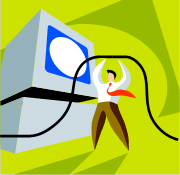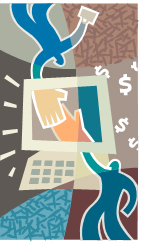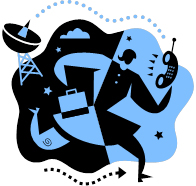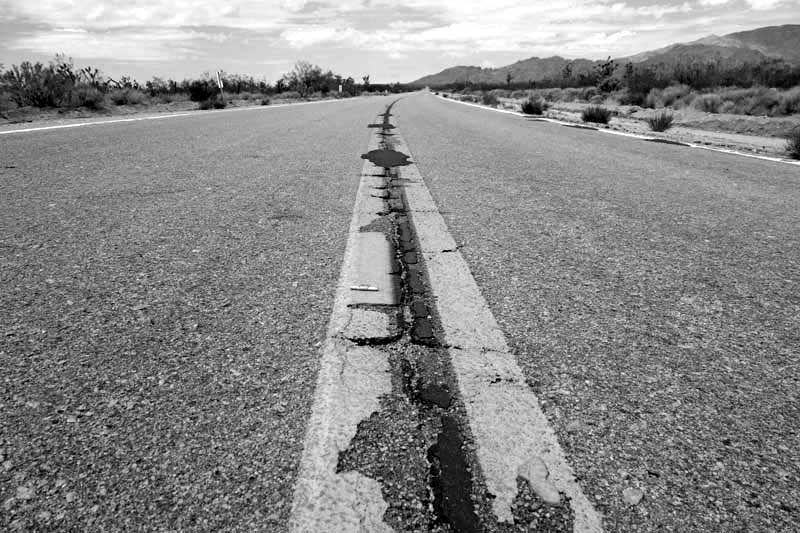 Since the passage of the Wilderness Act of 1964, it has been under attack. Attacked by those who want to relax the standards and develop wilderness areas for the “benefit“ of society, attacked by those who want more intervention via “land management,” attacked by the trail builders who want more well-groomed pathways, attacked by the sign people who want all kinds of directional and interpretive boards to inform people where they are or what they are looking at.
Since the passage of the Wilderness Act of 1964, it has been under attack. Attacked by those who want to relax the standards and develop wilderness areas for the “benefit“ of society, attacked by those who want more intervention via “land management,” attacked by the trail builders who want more well-groomed pathways, attacked by the sign people who want all kinds of directional and interpretive boards to inform people where they are or what they are looking at.
 These attackers may seem to be unrelated to each other, but they have one thing in common — all these groups directly or indirectly see wilderness as an economic opportunity. Additionally groups of people such as the trail guide writers, the whitewater raft companies, and wilderness guides are benefitting financially from the wilderness and increasing man’s impact by bringing an increasing number of people into our wild areas. Oh, they say they do it to introduce more people to wilderness, but lets face it; they do it for the money. More people are not good for wilderness. Especially more people who would not have ventured forward without those who provide information and/or access.
These attackers may seem to be unrelated to each other, but they have one thing in common — all these groups directly or indirectly see wilderness as an economic opportunity. Additionally groups of people such as the trail guide writers, the whitewater raft companies, and wilderness guides are benefitting financially from the wilderness and increasing man’s impact by bringing an increasing number of people into our wild areas. Oh, they say they do it to introduce more people to wilderness, but lets face it; they do it for the money. More people are not good for wilderness. Especially more people who would not have ventured forward without those who provide information and/or access.
But these attackers are not the biggest threat to wilderness; technology is. To keep our wilderness wild, society must see its value. Technology changes our perception of wilderness. It also changes the individual’s wilderness experience, whether it be used in selecting a destination, planning a trip, or using gadgets once we get there. To sum it up:
Technology marginalizes wilderness.
Modern man has made a serious impact on nature as he constantly works to reshape it to meet the needs of civilization.
Agriculture, dams, roads, logging, mining, and other activities change wilderness forever into something different than what we found before our attempts to improve the human condition. Many of these activities are beneficial to man. But there is value in setting aside large portions of our mostly untouched land as permanent wilderness, forbidding man to change it.
The value in wilderness is a place where man can go to learn of the natural world on Nature’s terms; for Nature has no prejudice — she doesn’t care if you live or die. The ability of each individual to understand and survive using his or her skill, knowledge, and experience is critical to the continued importance of maintaining wilderness as wilderness.
The biggest threat to wilderness is not the desire to reshape the land to meet the “common good” of society, but
the negative impact technology has on our perception of wilderness and our interaction with nature while in the wilderness.
 The Internet, movies, documentaries, pictures, blogs, books, trail guides, and their ilk change our perception of wild places. No longer are we able to travel to places unknown to us and discover their beauty on our own, because technology has set our expectations of what these are or should be. What used to be places that took skill and tenacity to find are now more easily accessed by the hiker using these technologies. We no longer have to “earn” the right to get to these places, someone can show us.
The Internet, movies, documentaries, pictures, blogs, books, trail guides, and their ilk change our perception of wild places. No longer are we able to travel to places unknown to us and discover their beauty on our own, because technology has set our expectations of what these are or should be. What used to be places that took skill and tenacity to find are now more easily accessed by the hiker using these technologies. We no longer have to “earn” the right to get to these places, someone can show us.
No longer is wilderness a blank space on a road map. It is a click on our computers.
Because technology can provide us with a preconceived idea of what these places will be before we even get there, wilderness’s value is diminished. Technology has changed our wilderness experience before we even get there. And the technology gadgets in our packs further distance us from nature.
Technology has the potential to drive the “need” for more construction of more roads to, and more trail heads at, wilderness boundaries. Technology drives incessant construction of more trails in wild places, as society demands more and easier access. Increasing visitation in wilderness degrades it. We need to do the opposite, make it less easy to travel into wilderness, a wilderness where the traveler must rely on himself to stay safe; not rely on society to extract the unprepared, the unskilled, the inexperienced, when they get in over their heads.
THE THREAT OF THE ULTRALIGHT MOVEMENT
The so called ultralight backpacking movement supposedly started in the 90’s when Ray Jardine published Beyond Backpacking. In fact, this was not a new idea; for decades many backpackers had been hiking with minimal gear, but their focus had been on the skills required to stay safe in the wilderness more than the weight of each item.
Jardine promoted fast and light so the walker could cover more miles per day, and re-supply often to keep pack weight down, which usually necessitated leaving the wilderness to do so. The fast and light was gear-centric, not wilderness-centric.
Many who read Jardine’s book thought that ultralight weight would allow them to travel faster, see only the best nature had to offer, and quickly return safely. The skill to build a fire was replaced by BIC mini lighters and cotton balls soaked in Vaseline. Navigation skills were replaced by GPS units. The need to navigate was replaced by maintained trails — boring trails carrying bored hikers who must resort to portable music players and headphones to mask the monotony of following the pathway. The individual’s responsibility to know what they are doing, and be skillfully prepared. was replaced by cell phones and personal locator beacons. The ability to deal with severe weather has been replaced by Gore-Tex and Cuben Tech fabrics – people attempted to go to places once thought to be difficult based on the equipment and clothing that will keep them safe.
All these technologies separate us from nature. Instead of a focus on understanding nature, there is a focus on the gear that will keep us safe; technologies that will somehow  enhance our wilderness experience. When in fact, technology diminishes our relationship with nature. Technology is a barrier between us and nature.
enhance our wilderness experience. When in fact, technology diminishes our relationship with nature. Technology is a barrier between us and nature.
Technology makes wilderness smaller; technology gives us a false sense of security. Technology distorts wilderness — we see wilderness through rose-colored glasses. How can we be advocates for wilderness when we are constantly wearing technology blinders?
WHAT TO DO?
Learn the skills and knowledge required to keep you warm, dry, and safe. Analyze your gear. Why are you bringing clothing or gear made from some new miracle fabric — can you be safe without it. If the weight of an item is more important than its functionality, you might have missed the point. If you spend more time reading about backpacking, lurking on backpacking forums, playing with gear lists and spreadsheets, or researching the ultimate gear than the time you actually spend hiking, then you probably have allowed technology to take control of your life.
- Do you need to walk with a manufactured stick in each hand? You might be addicted to technology.
- Do you need to wear the newest cushioned-soled, anti-pronation, water proof breathable shoe? You might be a victim of technology and marketing.
- Do you need to bathe everyday on a backpacking trip and apply deodorant daily? Technology and marketing has gained control of your brain.
- Look at every item in your pack that is battery powered — why are you brining it? If the answer is to be safe or get me out of a dangerous situation, you need to throw it away and learn what to do without it.
- If you need to read a trail guide or post a message on an Internet forum asking, “Where should I go backpacking?” It may be too late — you have been infected by the technology virus.
I am not saying all technology is bad, but it cannot be allowed to become more important than wilderness. If your focus is on using technology or you think about gear more than sunsets, alpenglow, meadows, or birds, how can you be an advocate for wilderness when you can’t be an advocate for living your own life untethered from technology in the wilderness? Collectively, how can we protect wilderness when society sees wilderness from a technology-twisted vantage point?

